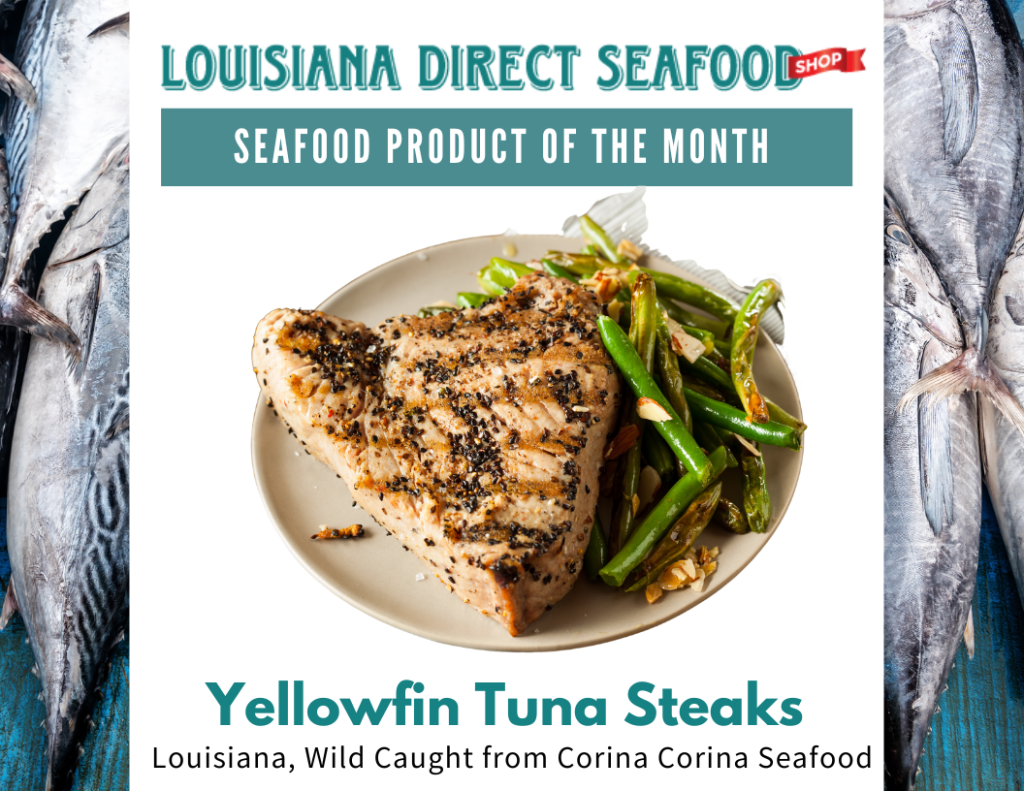
Louisiana has long been on the list of the greatest fishing destinations, but when it comes to yellowfin tuna (also known as ahi tuna), our state has repeatedly been ranked as tops in the world!
In sports fishing circles, there are two capitals of tuna fishing in Louisiana. The first is Venice, known as the “tuna capital of the Gulf,” where more tuna catches have been recorded than any other place in the Gulf of Mexico. Specifically, the Midnight Lump, or the Sackett Bank, about 50 miles from Venice, a large underwater salt mountain 200 feet from the water’s surface, is legendary and considered by many tuna fishermen to be the best fishing ground in the continental U.S. The second-best location for tuna fishing in Louisiana is Grand Isle.
Louisiana’s warm waters with abundant food sources make its Gulf a prime habitat for tuna. Yellowfin – and other tuna- eat a tremendous amount: 10 percent of their body weight. Consequently, they are high up in the food chain – their predators are sharks and whales.
To appreciate yellowfin on the table is to understand the challenge in their catch. This torpedo-shaped fish can swim as fast as 47 mph. They can grow up to 7 feet long and weigh over 400 pounds, and they are known to put up a fight.
While yellowfin can be fished throughout the year in Louisiana, the best time opportunities to catch them is January to April and September to December. Low season is May to August, but that’s not to say you won’t find any; you will probably have to go in deeper waters – or follow some shrimp boats. (Tuna are known to feed on the bycatch that shrimpers throw out.)
The yellowfin sold by Delcambre Direct Seafood comes from Corina, Corina Seafood. Fishermen venture into the deep waters of the Gulf to pull in preferred 80 to 90 pounders.
Nutritional Value
Tuna is a fantastic source of protein with very few calories. In 100g of tuna, you could eat up to 30g of protein and take in only 184 calories. Thanks to its richness in healthy omega-3 fatty acids, it fights against fatty acids. It’s a strong source of Vitamins A, C, B6, and B12, as well as niacin, zinc, and manganese. Although low in sugar, in the same 100g of tuna there is around 50mg of salt and 49mg of cholesterol.
NOTE: Because of the fish’s heavy diet, they can accumulate metals and the mercury levels can be such that you should limit your intake to no more than 6 to 8 ounces three times a month.
Storage
Fresh tuna should be eaten within two days of purchase, or it can be kept frozen for up to three months.
Because ahi tuna tends to dry out quickly, it’s best to store it in an air-sealed container, on the bottom shelf of your refrigerator.
Preparation
When buying tuna, you should look for a bright red color and firm texture. The raw meat should never be brown or pinkish.
The yellowfin tuna has a mild and meaty flavor. In comparison to other types of tuna, yellowfin meat is leaner than the bluefin and more flavorful than albacore. For a milder taste, you can remove the dark lateral line from the tuna’s meat. You can also try marinating the tuna meat in white wine, olive oil, and some brown sugar for a more flavorful grilled tuna steak.
A good tuna filet is like a fine steak. So, the key is cooking it like you would a piece of meat. The same preparation, sauces and garnishes that work well with a steak probably will taste good with tuna.
For a good sear, pat the fish with paper towels before oiling it.
Careful not to overcook tuna; it will dry out. Best to keep some pink inside – if not rare – by searing it quickly in a very hot (preferably black iron) skillet. For a medium rare center, you should cook the steaks 1 to 1 ½ minutes on each side.


Recent Comments